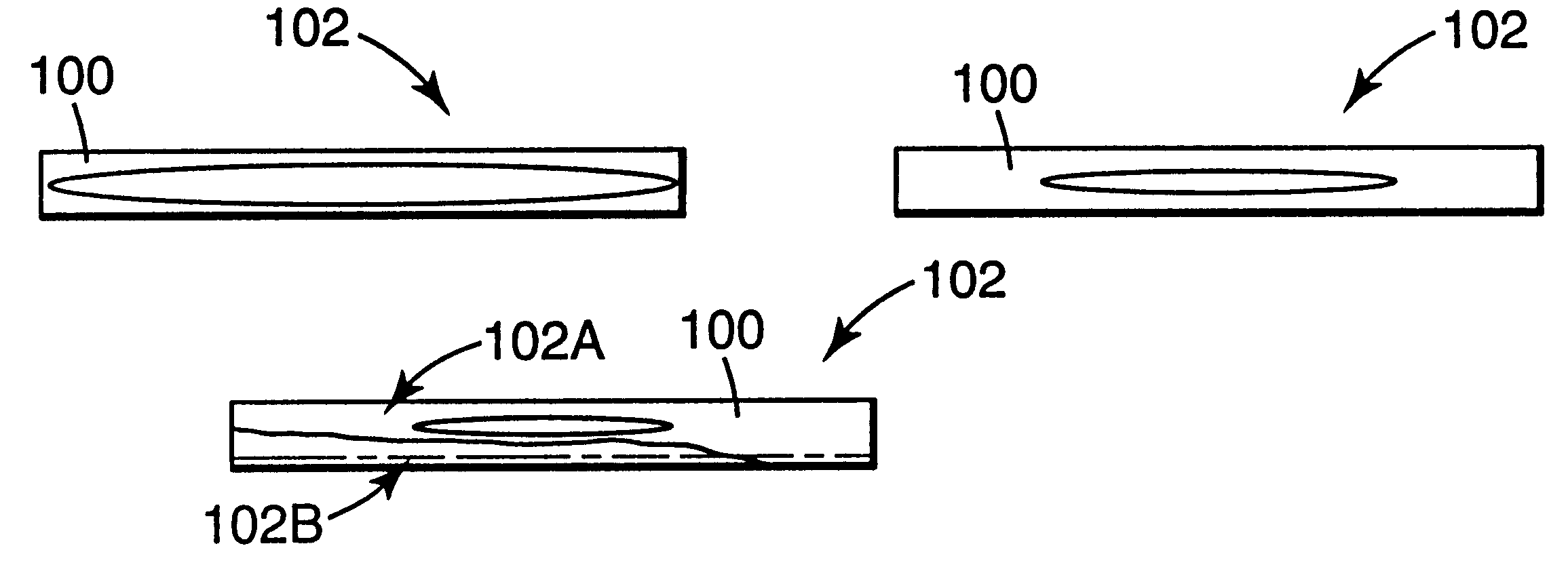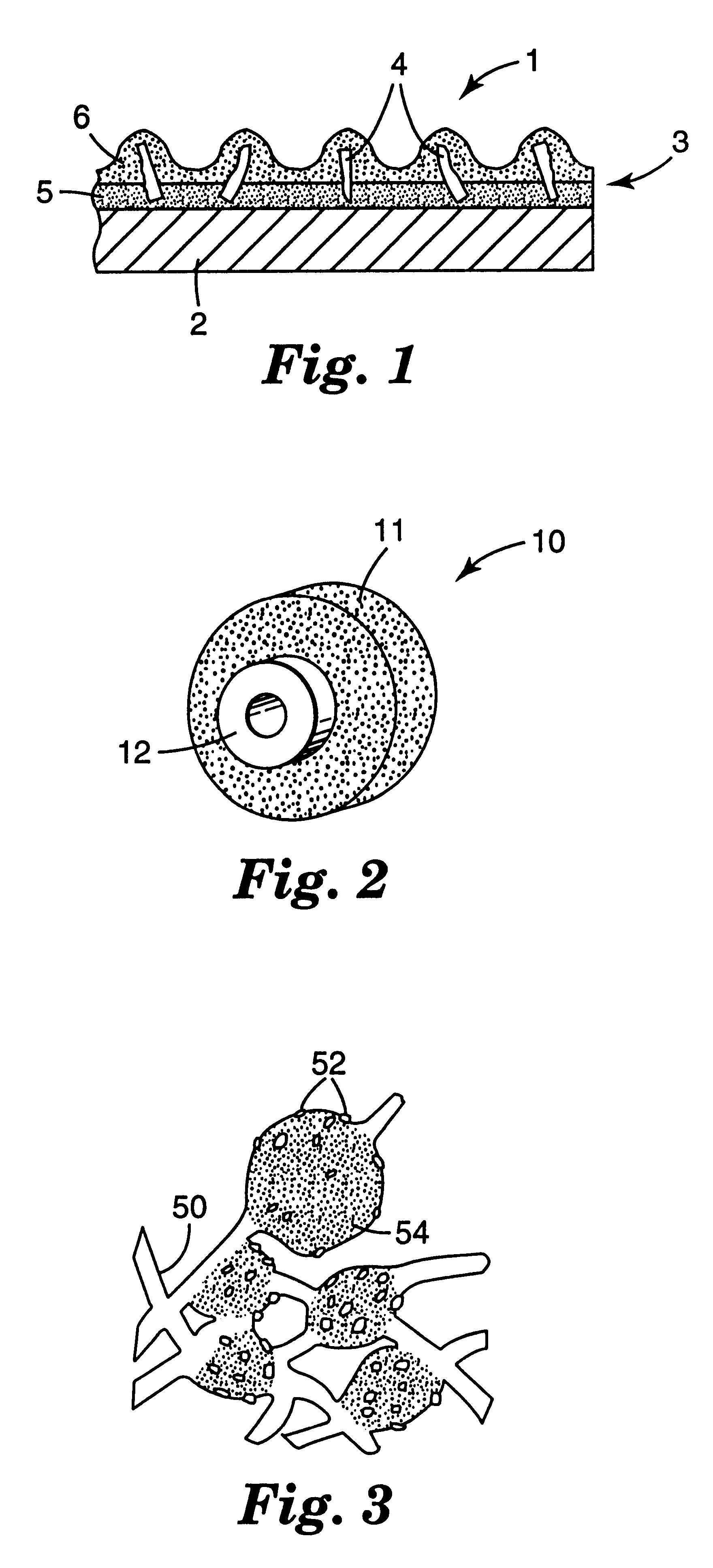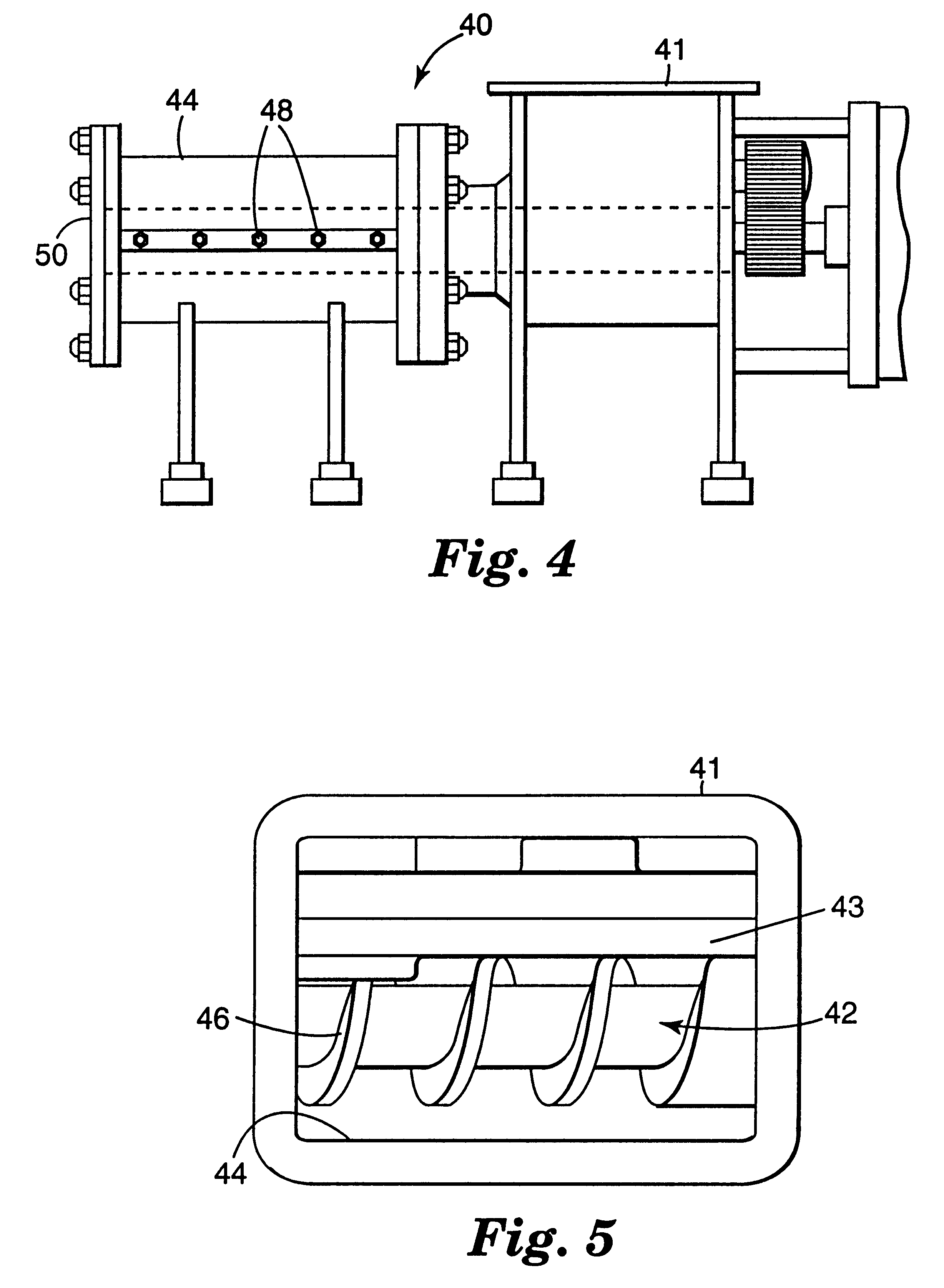Method for making abrasive grain using impregnation, and abrasive articles
a technology of abrasive grains and impregnation, which is applied in the field of making abrasive grains using impregnation, and abrasive articles, can solve the problems of large abrasive grain precursors, cracking or splitting of abrasive grains, and a large distribution of particle sizes of crushed materials, and not providing a single grade or size range of dried particles , the effect of crushing material
- Summary
- Abstract
- Description
- Claims
- Application Information
AI Technical Summary
Benefits of technology
Problems solved by technology
Method used
Image
Examples
example 1
Example 1 was prepared by first mixing 1194 parts of boehmite (available under the trade designation "DISPERAL" from Condea Chemie, GmbH of Hamburg, Germany) with 3000 parts of acidified water (prepared by mixing 3000 parts of deionized water with 71 parts of concentrated nitric acid) using a continuous mixer to form a sol. The sol was dried at less than 160.degree. C. for less than 48 hours. The dried material was crushed, and then screened to produce -150 mesh (U.S. Standards screen size) particles.
27.3 kilograms (sixty pounds) of the -150 mesh dried material were charged into a mixer (model FM-130D; available from Littleford-Day, Inc. of Florence, Ky.). 13.6 kg (thirty pounds) of tap water were sprayed into the mixer, while the later was mixing. More specifically, the water was sprayed using a 19 liter (5 gallon) spray paint pressure vessel (available from Graco of Minneapolis, Minn.) at a rate of about 13.6 kilograms / min (30 lbs. / min.) under a pressure of 2.8 kg / cm.sup.2 (40 psi...
example 2
Example 2 was prepared by placing 73 grams of the screened +8 mesh (calcined) rods from Example 1. Sealed to the opening of the flask was a graduated funnel having 200 ml of the rare earth nitrate solution therein. An aspirator was used to pull a vacuum over both the rods and the solution. After about 30 seconds, the solution began to boil and a valve on the graduated funnel was opened to allow the rare earth nitrate solution to fill the flask containing the rods. A great deal of bubbling was observed, which was believed to be due to the vacuum causing the air trapped in the pores of the rods to be expelled. After about 3 minutes, the vacuum was released and the rods were removed from the flask. Excess surface liquid was removed from the rods as described in Example 1.
The rods were dried in a forced air oven at 80.degree. C. for about 64 hours (over the weekend). The dried, impregnated rods were again screened using the 8 mesh screen. Only about 6% (by weight) of the rods now passed...
example 3
Example 3 was prepared by mixing, using a continuous mixer, 1194 parts of boehmite ("DISPERAL") with 2864 parts of deionized water (60.degree. C.), 72 parts of concentrated nitric acid, 390 parts of Mg(NO.sub.3).sub.2.6H.sub.2 O, and 136 parts of an iron oxide dispersion (6.6% lepidocrocite particles, calculated on a theoretical basis as Fe.sub.2 O.sub.3 ; (.gamma.-FeOOH), aqueous dispersion (pH=5.0-5.5), about 90 to 95% of which is lepidocrocite, acicular particles with an average particle size of about 0.05 to 0.1 micrometer, a length to diameter or width ratio of about 10:1, and a surface area of about 115.3 m.sup.2 / g) to form a sol. The sol was dried at less than 160.degree. C. for less than 48 hours. The dried material was crushed, and then screened to retain approximately -100+200 mesh (U.S. Standard screen sizes) sized particles.
Rods were prepared from the -100+200 mesh material as described in Example 1, except that 9 kg (20 pounds) of water were sprayed onto 13.6 kg (30 po...
PUM
| Property | Measurement | Unit |
|---|---|---|
| Fraction | aaaaa | aaaaa |
| Fraction | aaaaa | aaaaa |
| Percent by mass | aaaaa | aaaaa |
Abstract
Description
Claims
Application Information
 Login to View More
Login to View More - R&D
- Intellectual Property
- Life Sciences
- Materials
- Tech Scout
- Unparalleled Data Quality
- Higher Quality Content
- 60% Fewer Hallucinations
Browse by: Latest US Patents, China's latest patents, Technical Efficacy Thesaurus, Application Domain, Technology Topic, Popular Technical Reports.
© 2025 PatSnap. All rights reserved.Legal|Privacy policy|Modern Slavery Act Transparency Statement|Sitemap|About US| Contact US: help@patsnap.com



